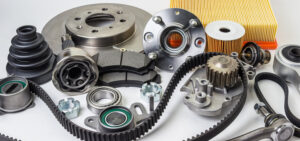
The Importance of Lubricants in Automotive Maintenance
In the world of automotive maintenance, lubricants play a crucial role in ensuring the smooth operation and longevity of vehicles.

The Honda 125 motorcycle is renowned for its reliability, performance, and durability, making it a popular choice among riders worldwide. A critical component that plays a significant role in the engine’s efficiency and overall performance is the cam lever. In this article, we will delve into the function of the cam lever, its importance in the Honda 125 engine, and maintenance tips to ensure it operates smoothly.
The cam lever, also known as the rocker arm, is an integral part of the valve train in the Honda 125 engine. It is responsible for transferring the motion from the camshaft to the valves, ensuring they open and close at the correct intervals. This precise timing is crucial for the engine’s intake and exhaust cycles, directly impacting the motorcycle’s performance and fuel efficiency.
Regular Inspections: Conduct regular inspections of the cam lever to identify any signs of wear or damage. Look for cracks, excessive wear, or deformation, which can affect its performance.
Proper Lubrication: Ensure that the cam lever is adequately lubricated. Proper lubrication reduces friction between the camshaft and the lever, preventing wear and tear. Use the recommended engine oil for the Honda 125.
Valve Clearance Adjustment: Periodically check and adjust the valve clearance. Incorrect valve clearance can lead to improper valve operation and increased stress on the cam lever. Follow the manufacturer’s guidelines for valve clearance specifications.
Replacement of Worn Parts: If you notice any significant wear or damage to the cam lever, replace it promptly with a high-quality replacement part. Using genuine Honda parts ensures compatibility and longevity.
Professional Servicing: Consider professional servicing for more complex maintenance tasks. Experienced mechanics can accurately diagnose issues with the cam lever and other engine components, ensuring thorough and reliable maintenance.
The cam lever is a vital component of the Honda 125 engine, playing a crucial role in valve operation and overall engine performance. Regular maintenance and proper care of the cam lever can enhance the motorcycle’s performance, fuel efficiency, and longevity. By understanding the importance of the cam lever and following maintenance best practices, Honda 125 owners can ensure their motorcycles remain in peak condition, providing a smooth and reliable riding experience. Whether you are a seasoned rider or a new enthusiast, paying attention to the cam lever and other critical engine components will help you get the most out of your Honda 125.
Palestine Auto is a trusted dealer of bike and rickshaw spare parts located in the heart of Lahore, Pakistan. Our commitment to quality and customer satisfaction has made us a favorite among local mechanics and vehicle owners.

In the world of automotive maintenance, lubricants play a crucial role in ensuring the smooth operation and longevity of vehicles.

Introduction The tap lock, commonly referred to as “tap lock loha” in many regions, is an essential component in the

Introduction The Honda 125 motorcycle is renowned for its reliability, performance, and durability, making it a popular choice among riders

Introduction Loader rickshaws are a common sight in many developing countries, especially in South Asia, where they play a crucial
Chat with us,